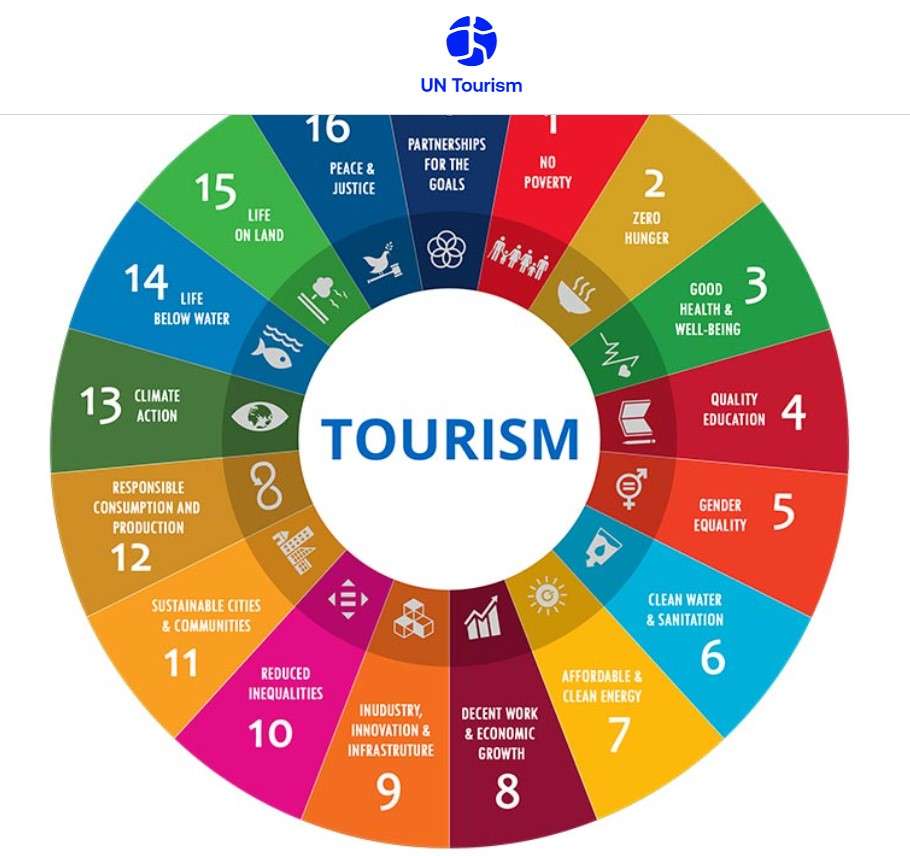The article shows a detail understanding of tourism aggregators, Tourism Measurement and Tourism Indicators. Measurement of Tourism and Indicators can be Core, Supplementary and for future.

1. Tourism Satellite Account: Because of its link to the System of National Accounts, the Tourism Satellite Account is the second international standard for tourism statistics (Tourism Satellite Account: Recommended Methodological Framework 2008, or TSA:RMF 2008). Its purpose is to present economic data related to tourism within a framework of internal and external consistency with the rest of the statistical system. It is the fundamental underpinning for tourist statistics reconciliation.
2. Total Tourism Internal Demand: Total tourism internal demand, is the sum of internal tourism consumption, tourism gross fixed capital formation and tourism collective consumption (TSA:RMF 2008, 4.114). It does not include outbound tourism consumption. Total tourism internal demand is a synthetic measurement, derived from the aggregation of internal tourism consumption, tourism gross fixed capital formation and tourism collective consumption. This aggregate has analytical interest in the estimation of the economic size of tourism in a country. It must be observed that it does not include outbound tourism consumption, which full value corresponds to an import (acquisition by residents from non-residents), and thus has no direct effect on the supply goods and services in the economy of reference, nor on value added.
3. System of National Accounts: The System of National Accounts (SNA) is the internationally agreed standard set of recommendations on how to compile measures of economic activity in accordance with strict accounting conventions based on economic principles. The recommendations are expressed in terms of a set of concepts, definitions, classifications and accounting rules that comprise the internationally agreed standard for measuring indicators of economic performance. The accounting framework of the SNA allows economic data to be compiled and presented in a format that is designed for purposes of economic analysis, decision-taking and policymaking.
4. International Standard Industrial Classification of All Economic Activities: The International Standard Industrial Classification of All Economic Activities (ISIC) consists of a coherent and consistent classification structure of economic activities based on a set of internationally agreed concepts, definitions, principles and classification rules. It provides a comprehensive framework within which economic data can be collected and reported in a format that is designed for purposes of economic analysis, decision-taking and policymaking. The classification structure represents a standard format to organize detailed information about the state of an economy according to economic principles and perceptions (ISIC, Rev.4, 1).
5. Gross fixed capital formation: Gross fixed capital formation is defined as the value of institutional units’ acquisitions less disposals of fixed assets. Fixed assets are produced assets (such as machinery, equipment, buildings or other structures) that are used repeatedly or continuously in production over several accounting periods (more than one year) (SNA 2008, 1.52).
6. Gross margin: The gross margin of a provider of reservation services is the difference between the value at which the intermediated service is sold and the value accrued to the provider of reservation services for this intermediated service.
Also Read:
- 15 Different Types of Budgeting in Tourism Accounting
- Basic Accounting Books and Records
- Centralization & Decentralization, Span of Control, Formalization in Management
7. Gross value added: Gross value added is the value of output less the value of intermediate consumption (TSA:RMF 2008, 3.32).
8. Gross value added of tourism industries: Gross value added of tourism industries (GVATI) is the total gross value added of all establishments belonging to tourism industries, regardless of whether all their output is provided to visitors and the degree of specialization of their production process (TSA:RMF 2008, 4.86).
9. Economic analysis: Tourism generates directly and indirectly an increase in economic activity in the places visited (and beyond), mainly due to demand for goods and services thatneed to be produced and provided. In the economic analysis of tourism, one may distinguish between tourism’s ‘economic contribution’ which refers to the direct effect of tourism and is measurable by means of the TSA, and tourism’s ‘economic impact’ which is a much broader concept encapsulating the direct, indirect and induced effects of tourism and which must be estimated by applying models. Economic impact studies aim to quantify economic benefits, that is, the net increase in the wealth of residents resulting from tourism, measured in monetary terms, over and above the levels that would prevail in its absence.
10. Tourism Competitive Index: The Index assesses 117 economies, based on 5 sub-indexes, 17 pillars and 112 individual indicators, distributed among the different pillars.
The five Sub indexes:
- Enabling Environment
- Travel and Tourism Policy and Enabling Conditions
- Infrastructure
- Travel and Tourism Demand Drivers
- Travel and Tourism Sustainability
11. Satellite accounts: There are two types of satellite accounts, serving two different functions. The first type, sometimes called an internal satellite, takes the full set of accounting rules and conventions of the SNA but focuses on a particular aspect of interest by moving away from the standard classifications and hierarchies. Examples are tourism, coffee production and environmental protection expenditure. The second type, called an external satellite, may add non-economic data or vary some of the accounting conventions or both. It is a particularly suitable way to explore new areas in a research context.
12. Tourism Satellite Account aggregates: The compilation of the following aggregates, which represent a set of relevant indicators of the size of tourism in an economy is recommended (TSA:RMF 2008, 4.81):
- Internal tourism expenditure;
- Internal tourism consumption;
- Gross value added of tourism industries (GVATI);
- Tourism direct gross value added (TDGVA);
- Tourism direct gross domestic product (TDGDP).
13. Tourism expenditure: It refers to the amount paid for the acquisition of consumption goods and services as well as valuables for own use or to give away, for and during tourism trips. It includes expenditures by visitors themselves as well as expenses that are paid for or reimbursed by others.
14. Tourism consumption: The concept of tourism consumption used in the TSA goes beyond that of tourism expenditure. Besides tourism expenditure, it also includes services associated with vacation accommodation on own account, tourism social transfers in kind and other imputed consumption.
15. Tourism direct gross value added (TDGVA): It is defined as part of the gross value added generated in the economy by tourism industries and other industries directly serving visitors in their supply of goods and services in response to internal tourism consumption. Part of this aggregate (TDGVA) may be generated by tourism industries, and part of it may also be generated by other industries. Not all the gross value added of the tourism industries (GVATI) is part of TDGVA since these industries may also serve non-visitors, in the same way that non-tourism industries may serve visitors and thus generate part of TDGVA.


